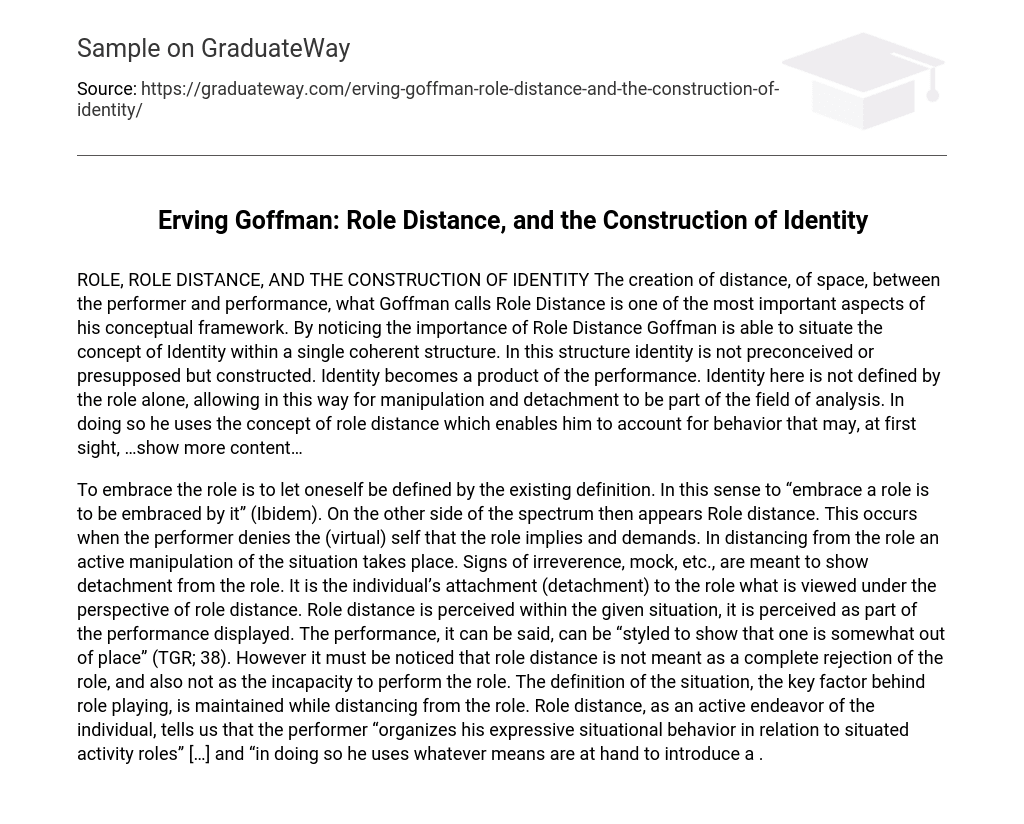The concept of Role Distance, as described by Goffman, is crucial in understanding the creation of distance or space between the performer and their performance. It forms an integral part of Goffman’s conceptual framework, allowing him to place the concept of Identity within a unified structure. Under this framework, identity is not predetermined or assumed, but rather constructed during the performance. Identity is shaped by the performance itself, and is not solely defined by the role being played. This framework allows for analysis of manipulation and detachment within the field. Goffman achieves this by utilizing the concept of role distance, which helps explain behaviors that may initially seem contradictory or confusing.
To fully embrace a role means allowing oneself to be defined by the established definition. In other words, embracing a role involves being embraced by it. On the contrary, role distance arises when the performer rejects the virtual self that the role suggests and requires.
In distancing from the role, there is an active manipulation of the situation, where signs of irreverence and mockery are used to demonstrate detachment from the role. Role distance is the individual’s attachment or detachment from the role, which is perceived within the given situation as part of the performance. The performance can be styled to show that one is somewhat out of place (TGR; 38).
It is important to note that role distance does not imply a total rejection of the role or an inability to fulfill the role. The definition of the situation, which is crucial for role playing, is still maintained even when distancing oneself from the role. Role distance is an active effort made by the individual to organize their behavior in relation to the roles they are situated in. They use whatever means available to introduce this distance.





